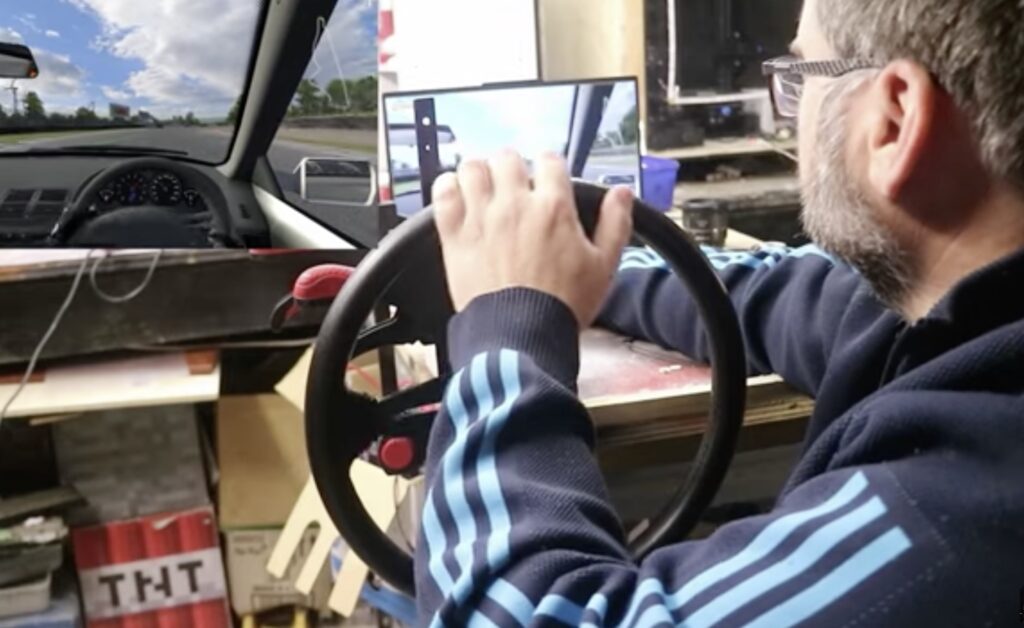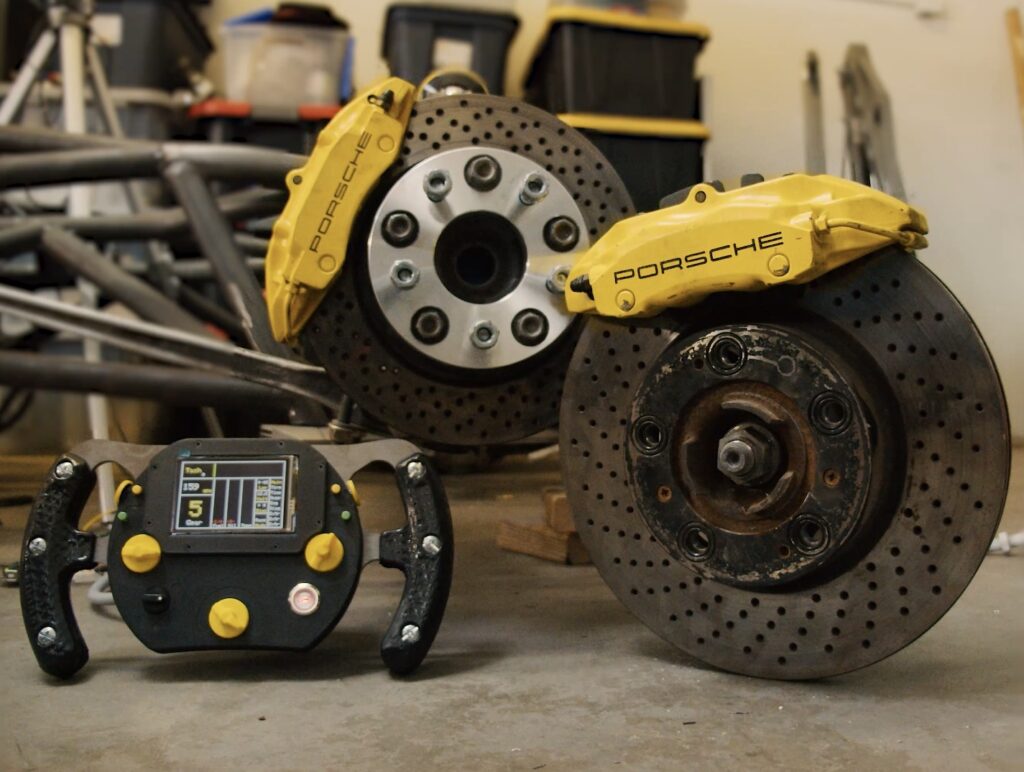04

Racing simulators these days are very good, thanks to incredibly realistic graphics and physics. Developers have recreated the effects of everything from tire composition to asphalt temperature. But a lot of that effort goes to waste when you’re playing with a standard gamepad, because that can’t probably any feedback other than some vibration. To make the most of racing sims, Jason Winfield built a DIY force feedback steering wheel using the motor from an old power drill.
Force feedback steering wheels act as both input devices and output devices. As input devices, they monitor the angle of the wheel to provide a steering value to the game. As output devices, a motor forces the steering wheel to rotate based on what occurs within the simulation. In a hard turn, it might provide resistance. If you spin out of control, the wheel might move around wildly. Because that has to overcome the player’s own grip on the wheel, the force feedback motor needs a lot of torque and that’s why Winfield chose to scavenge the motor from a power drill.
This motor, like any you’d find in a decent drill, is powerful. It also includes a planetary gearbox to increase torque at the expense of speed — a worthwhile compromise for an application like this. Winfield also scavenged the motor’s high-current driver, which can be an expensive component. An Arduino Leonardo board controls the motor’s operation according to values coming from the racing sim and also sends steering commands to the sim.
As Winfield states, this prototype has some issues and the strength of the parts isn’t enough for long term use. But with a little more development, he should have a pretty nifty force feedback steering wheel to race with!
The post DIY force feedback steering wheel receives motor from an old power drill appeared first on Arduino Blog.



